





There is a surprising variety of colors in the palm world. Palms are not always simply green tropical foliage. This article is a pictorial introduction to some of the most beautiful and surprising colors one can encounter in the palm family (Arecaceae)
There are over 2500 species in the palm family (Arecaceae) and most are indeed some shade of green (though the hues and intensities vary tremendously). And most people think of green when palms are mentioned. Those that know me or at least of my bent towards tropicals and succulents may think my relative disinterest in flowering plants means I am a 'green freak'. One does not normally associate most of the colors of the rainbow with palm trees, which, for the most part, do have very uninteresting or insignificant flowers. But some palms show an astounding variety of colors competing with the best of the ornamental foliage plants in cultivation. The colors of the foliage, fruits, trunks and even the roots of some palms are nearly unreal and vibrant in their displays. As you will see below, not all is green in the world of palms.
Like many other foliage plants, palms leaves are sometimes other colors than green. In a previous article I wrote on blue palms, some of these plants below were included.
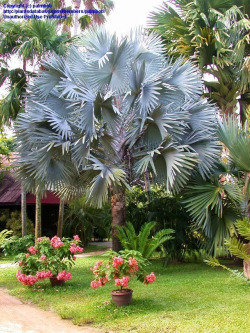
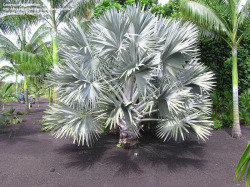
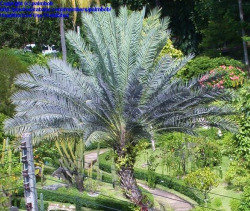
Two shots of Bismarckia: on the left is an unusually blue color leaf variety, and center one is unusually pale blue; right shows a Phoenix dactylifera hybrid with remarkably blue leaves
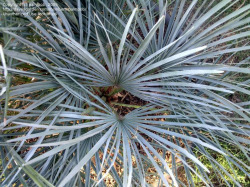
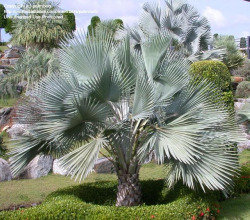
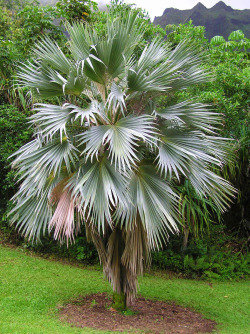
Chamaerops humilis (aka the common Mediterranean Fan Palm) can come in blues (left); middle shot of a Copernicia hospita (several other species have bluish leaves as well) and right shows a rare form of Pritchardia with a bluish waxy cast on its leaves in Hawaii
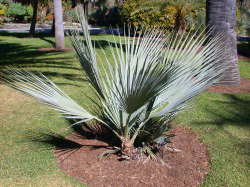
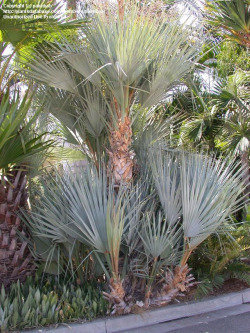
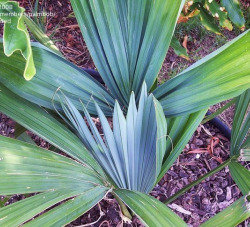
Some varieties of Nannarhops (native to Iran and Iraq) have very bluish leaves (left and center); right is a Sabal yapa seedling in my yard
With other palms, it is the new leaf only that is brilliantly colored (perhaps to make it less edible looking to leaf-eating creatures?)
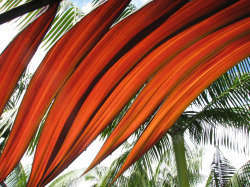
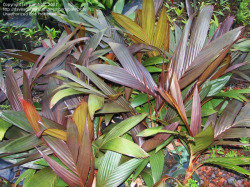
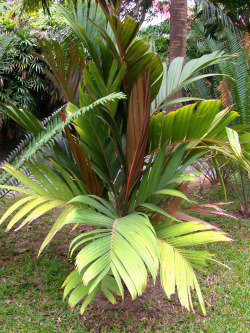
Actinokentia new leaf (left); seedlings (middle) and adult (right) of Areca vestiaria (maroon form) showing nice color in new leaves
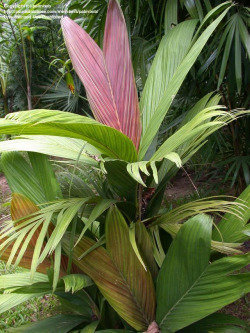
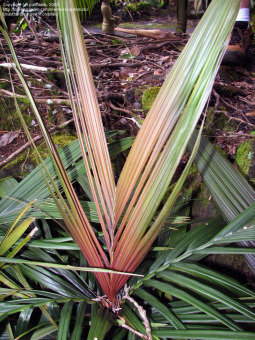
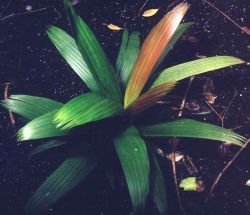
Calyptrocalyx is a great genus if you live in the tropics and want some colorful palms. Left: Calyptrocalyx pauciflorus, right: Calyptrocalyx 'Kainlas', below: Calyptrocalyx sancuim
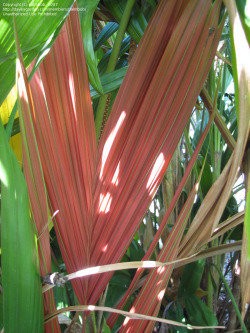

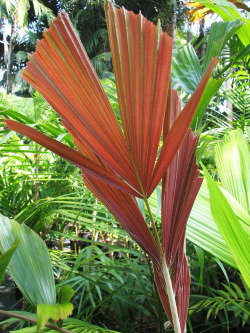
Two more specis of Calyptrocalyx: C. elegans (left) and C. hollrungii (middle). Right is a new red Gronophyllum pinangoides leaf
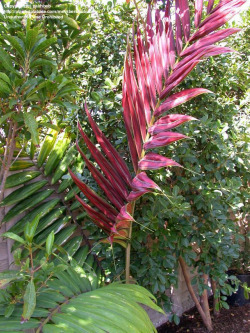
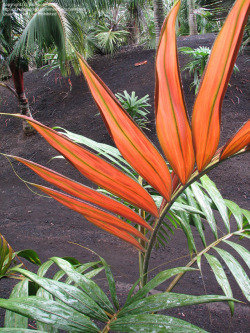
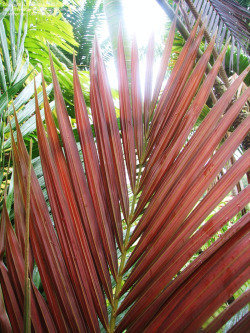
A popular palm collected simply because of the red new leaf, and labeled Flame Thrower Palm is Chambeyronia macrocarpa (left and center). Another somewhat common palm with a new red leaf is Laccospadix (right)
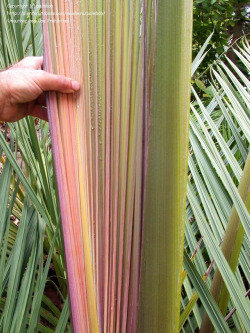

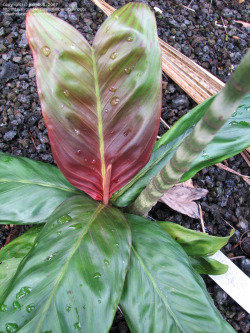
Some Dypsis will have a nice new colorful leaf as well (Dypsis 'Super' decipiens left, Dypsis firbrosa middle and Dypsis 'Monalingo' on right )


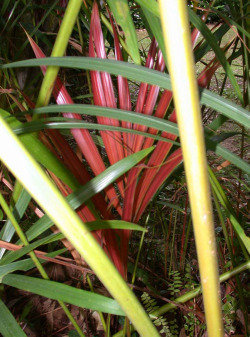
These two Geonomas have nice new leaves, too (left Geonoma epetiolata, middle Geonoma undata). Metroxylon sagu (the REAL Sago Palm) also has a nice colorful new leaf (right)
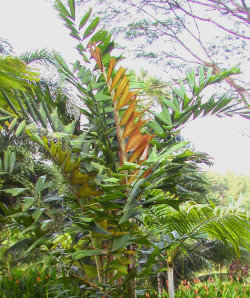
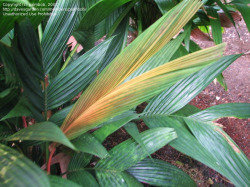
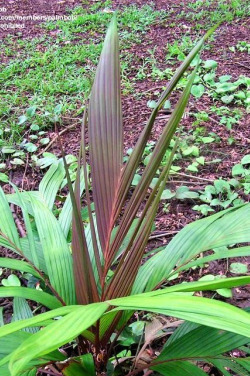
Three more tropical plants with nice new foliage: Ptychosperma sp. (left), Pinanga densiflora (middle) and Pholidostachys (right)
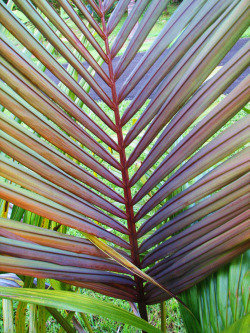

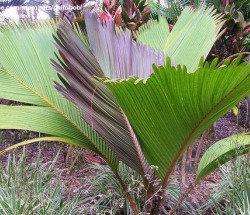
Just three more of the new leaf color palms (there are many dozens more... can't show them all... sigh): Lemurophoenix (left), Marojejya darianii (middle) and Phoenicophorum (right)
Some palms have variegation that makes thier leaves colorful. Variegation in the palm world (like with many other plants) can be a freak, random event, or occur predictably and consistently.
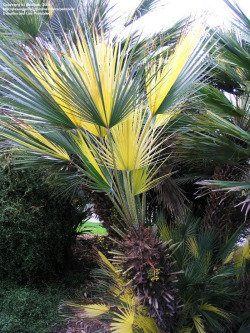
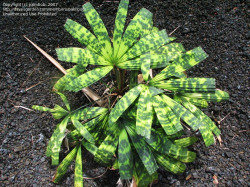
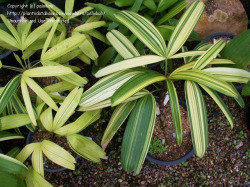
This Chamaerops (Mediterranean Fan Palm- left photo) is sort of a freak of nature, though quite attractive. This is a rare mutation. Licuala 'Mapu' is a more predictable and extremely sought after mutation, as are these variegated Rhapis in the right photo
In some palms, it is just the immature leaves that are colorful
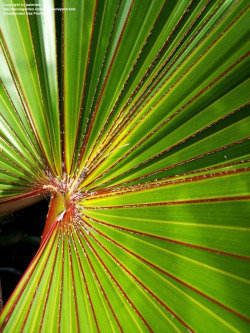
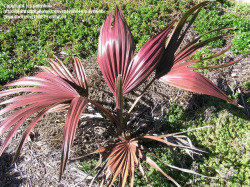
Latania lontaroides is a dull-grey-leaved plant as an adult, but for the first 5-10 years it has brilliantly colored leaves like those on the left. Livistona mariae has average green leaves when adult, but as a seedling, this hardly palm can be remarkably red (right)
And some palms just have some nice non-green color on the undersides of their leaves.
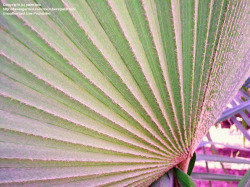

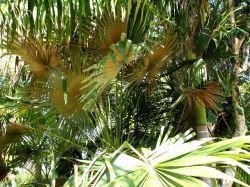
Brahea pimo has wonderfully fuzzy leaves with pinks and oranges on the undersides of the leaves (left); Kerriodoxa has nearly a pure white underside (middle) and Livistona fulva has coppery undersides (right).
Though colorful leaves tend to be the most obvious parts of palms that are not all green, some palms also have nicely colored petioles (the leaves' 'stem').
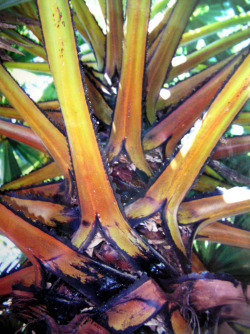
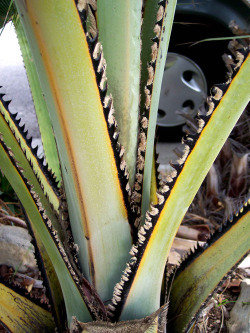
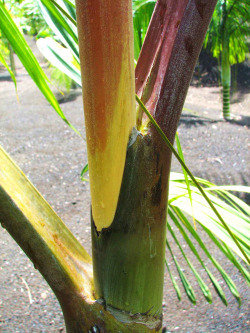
Borassus flabillefer (left), Copernicia baileyana (middle) and Actinokentia divariacata (right)
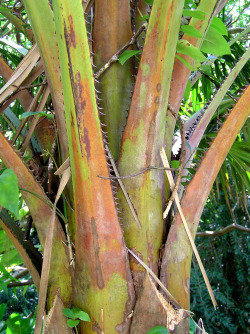
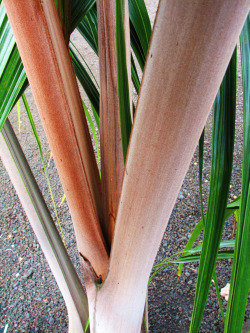
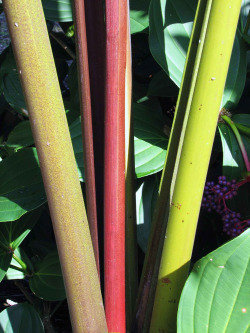
Copernicia glabrecsens (left); Dypsis sp. Brown Mealy Bug (middle) and Lemurophoenix halleuxii (right)

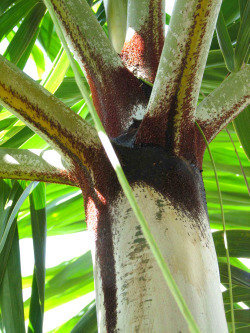
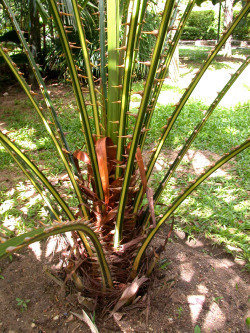
Raphia farinifera (left); Veitchia species (middle) and nicely striped Pholidocarpus (right)
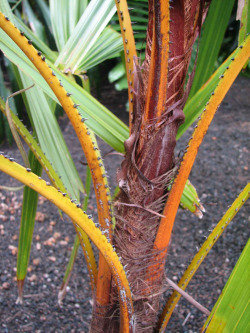
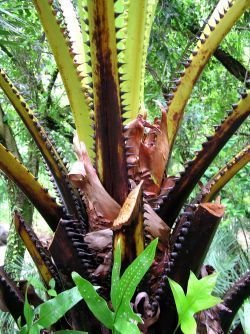
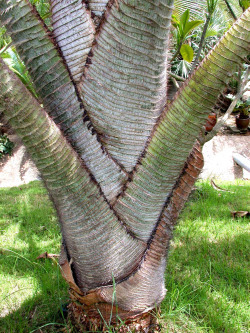
Licuala aurantiaca (left); Livistona carinensis (middle) and Pigafetta filaris (left)
Some palms have brightly colored, or at least strikingly colored non-green stems or trunks.
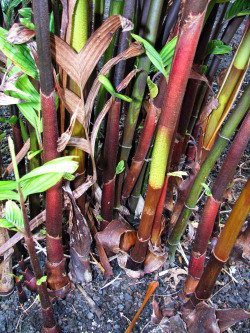
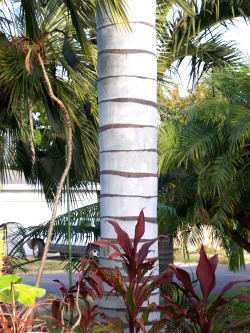
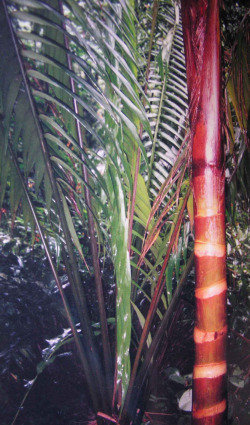
Pinanga species (left); Ceroxylon ventricosum has a nice, nearly pure white waxy trunk (middle) and Welfia regia can have red trunk (right)
But far more inpressive than the trunk in most brilliant colored palms is the crownshaft (not all palms have a crownshaft) that can vary tremendously across the color spectrum
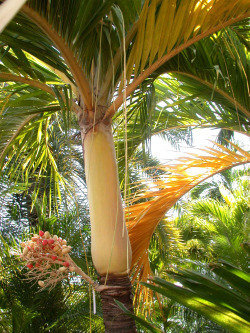
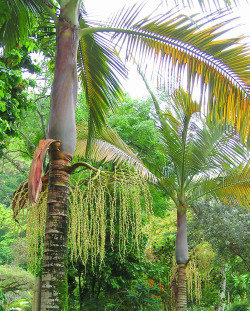
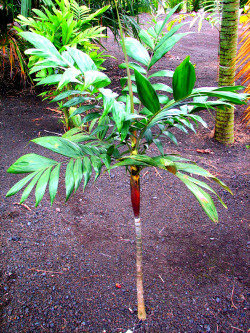
Adonidia merrillii Golden (left); Archontophoenix purpurea (Purple King Palm- middle); Basselinia gracilis (right)
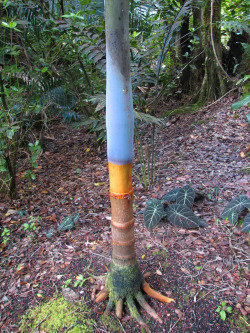
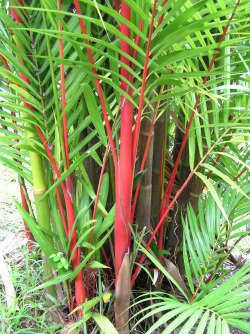
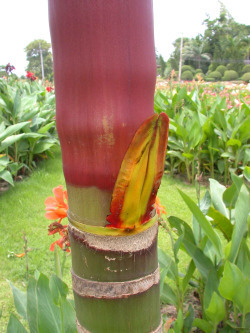
One of the most shocking and colorful of all crownshafted palms, Dictyocaryum lamarckium (left); One of the most famous and brilliantly colored of all palms, the Lipstick Palm (Cyrtostachys renda- middle), and Carpoxylon marcosperma (right)


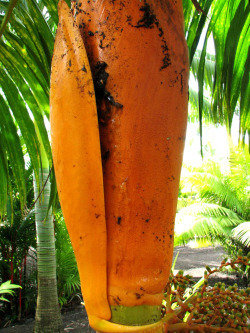
Areca is one of the more colorful genera (left Areca catechu Golden; Areca macrocalyx-middle; and Areca vestiaria on the right)
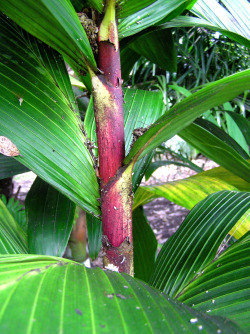
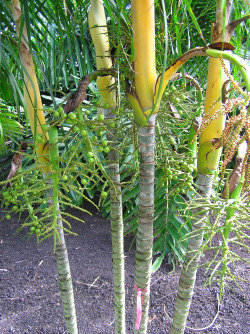
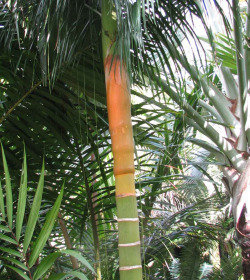
Dypsis is also well represented in the colorful crownshaft category: Dypsis paludosa (aka 'florencei) (left); Dypsis baroniiE (middle) and Dypsis pilulifera (aka Orange Crownshaft) (right)
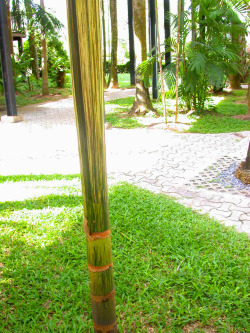
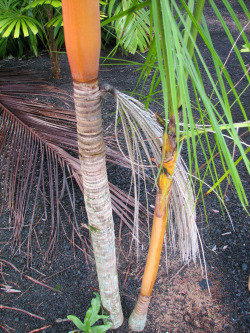
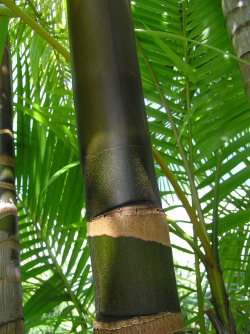
Euterpe species also have a pretty good representation in the colorful crownshafted group: Euterpe precatoria (left), Euterpe catinga (middle) and Euterpe oleracea (right)
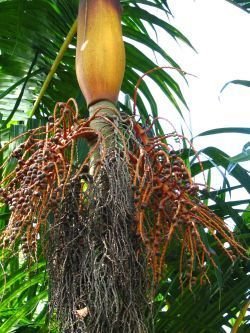
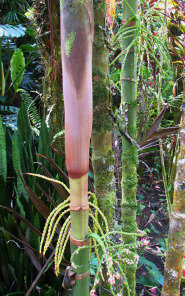
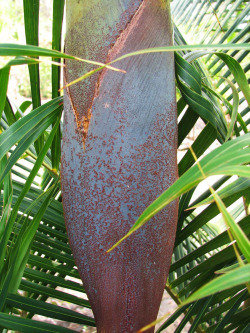
Probably one of the most colorful genera of all the palms are the Pinangas: Pinanga caesia (left); Pinanga modesta (middle); and Pinanga philippinensis (right)
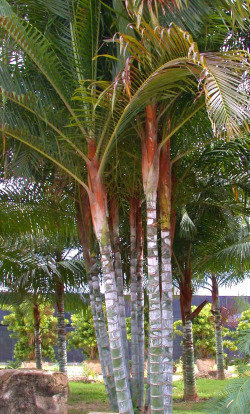
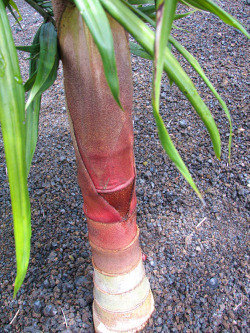
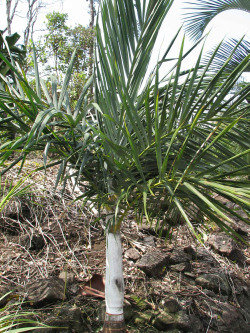
More Dypsis color for you: Dypsis leptocheilos x cabadae (left); Dypsis rivularis (middle) and Dypsis sainte-luceii (right)
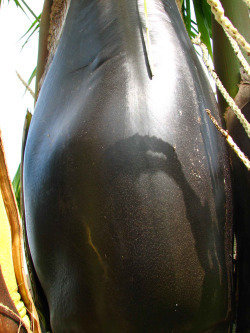

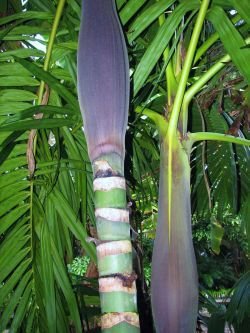
Some have unusually dark crownshafts: Neovetchia storckii (left); Oenocarpus mapora (middle) and Pinanga speciosa (right)
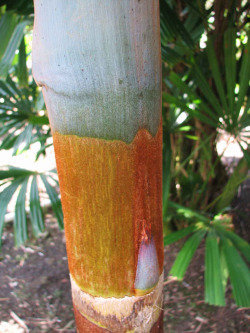
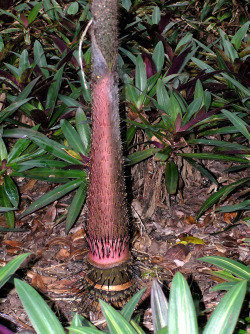
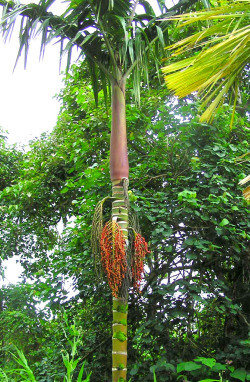
Here's just a few more standouts, though there are hundreds more: Wettinia hirsuta (left); Roscheria (middle) and Pinanga insignis (right)
Despite what I said earlier about flowers being rather dull, some palms have colorful flowers and/or flower spathes
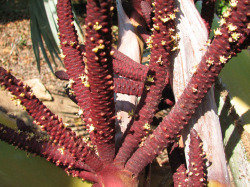
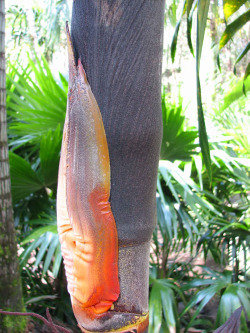
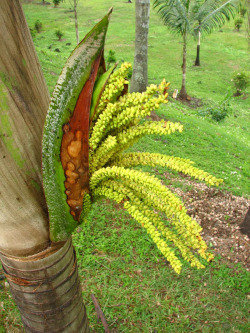
Bismarckia nobilis male flower (left); Basselinia pancheri has a great flower spathe as well as crownshaft; Dictyosperma album (right)
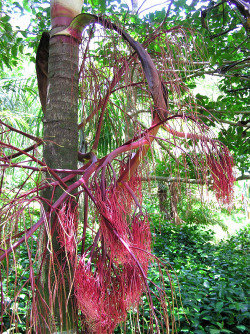
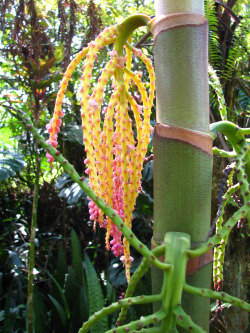
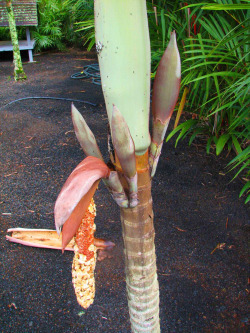
Dypsis pinnatifrons 'Pink' has spectacular flowers (left); Pinanga modesta is also colorful and Wettinia quinaria is atypical as well
Palm Fruit is typically colorful, presumably to attract animals to consume it and spread about the seed. But some fruits really stand out.
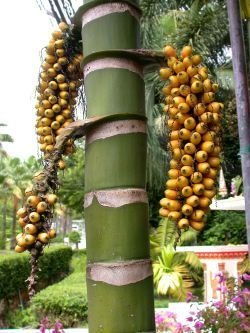
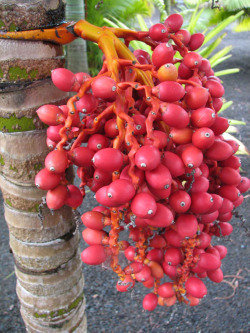
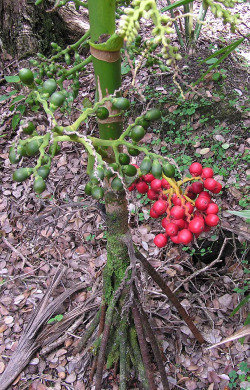
There is a lot of color in the genus Areca: Areca macrocalyx (left); Areca vestiaria (middle) and Areca guppyana (right)
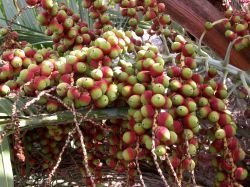
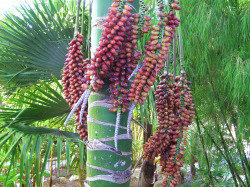
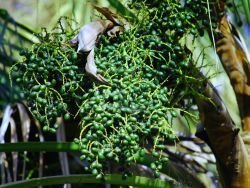
Even some of our common palms in southern California make colorful fruits: Butia capitata (Jelly Palm) left; Howea forsteriana (Kentia Palm) middle; and Livistona chinensis (Chinese Fan Palm) has nice blue-green fruits- right
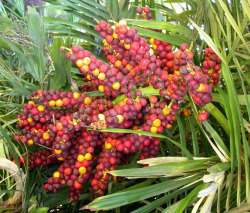
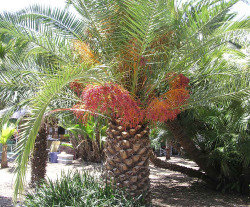
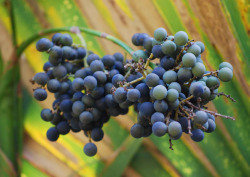
Arenga engleri has nice but toxic fruit (left); Some Phoenix has brilliant fruits (middle) and Sabal minor has blueberry-like fruit that is attractive

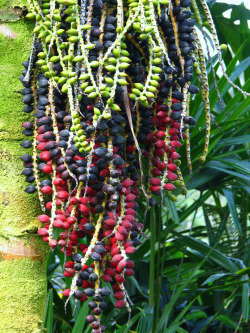
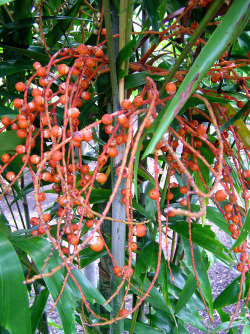
Pinanga dicksonii (left) Pinanga speciosa (middle) Ptychosperma cuneatum (right)
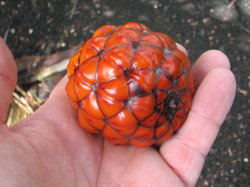
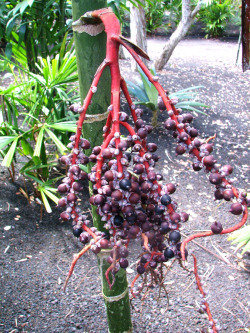
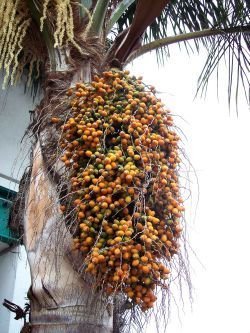
Raphia farinifera has a unique and beautiful fruit (left); Ptychosperma burretianum (middle) and even the common Queen Palm (Syagrus romanzoffiana) has colorful fruit (right)
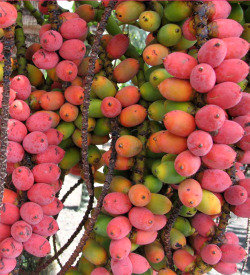
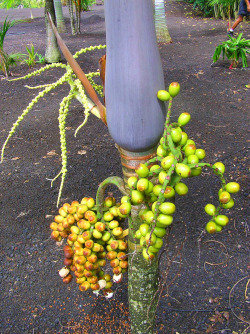
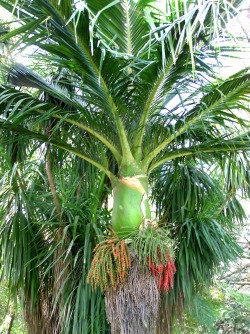
fruit from an unknown palm in Hawaii (left); Socratea fruit and crownshaft make a nice color pallet; Rhopalostylis sapida also shows nice colors in fruit (right)
Lastly even exposed palm roots can add a lot of color to the landscape
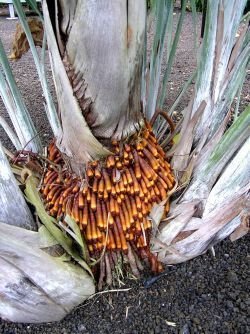
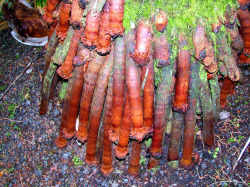
Mauritiella armata is a beautiful palm, but root exposure makes it even better (left); Clinostigma exorrhizum has nice colorful roots as well (right)
Though there are hundreds more examples of great colors in the palm world, I cannot include them all here. But you get the idea. For more photos of great palms, you should visit this website looking under Arecaceae in Davesgarden, or Palmpedia, an amazing website full of palm information and great photos, or one of the two other following links:
All the PlantFiles listings in the Arecacea family
Palmpedia
Palm and Cycad Societies of Australia (PACSOA
PalmTalk.org
Copyright © www.100flowers.win Botanic Garden All Rights Reserved